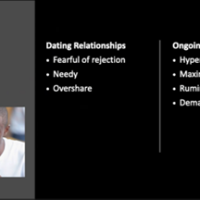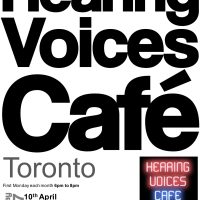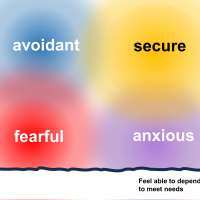This is a wonderful talk by Suzanne Beachy at TEDx Columbus 2012.
It’s so good I wanted to grab every idea, so transcribed it. The words are by Suzanne Beachy, as are the slides and the photo of her son Jake, who as she says: “you could say he died from a deficiency of truth”.
Note… If you want to watch and listen before you read then go to the embedded video at the end of the post.
Suzanne Beachy – What next for the truth?
Has anyone ever felt hopeless?
…ever known anyone who felt like they just plain lost hope?
I’d like you to meet someone who lost hope – my son Jake.
[She then introduces series of family photos us to her son Jake and who he was:]
arm wrestling, baseball, armpit farts; family and friends; the boys in the band; accomplished artist, talented musician; high school grad , college grad; big brother to a little sister and a little brother; – full of life, love and accomplishments.
But Jake struggled mightily in his 20s, the last month of his life homeless, died at 28 struck by a train.
What happened to Jake?
Well some might say he had a mental illness, and in fact he did have an experience of psychosis shortly after 911.
Fifty years ago that’s what we might have called a good old nervous breakdown.
But today the convention is that psychosis is s symptom of a serious chronic mental illness.
And that’s just exactly how Jake’s problem was viewed in the psych Ward at Ohio State : a symptom of a life-long brain disease. On only his second day in the psych ward, right in front of his girlfriend the psychiatrist said [in teenager voice]: ”it’s probably schizophrenia”.
When Jake was discharged he had no official diagnosis except for “psychosis not otherwise specified” but the psychiatrist wanted to treat him as if he had “bipolar disorder”.
What for? – just in case?
It didn’t make any sense to me and it didn’t make any sense to Jake.
It didn’t make any sense to me and it didn’t make any sense to Jake.
Do you know what the implications are of receiving a diagnosis like “bipolar disorder”?
Let’s take a look at the NAMI – [us] National Aliance on Mental Illness- guidelines…..
That’s a grim prognosis.
A grim prognosis
So what about schizophrenia? Which was the psychiatrist’s first guess diagnosis.
Is recovery from schizophrenia possible?
Well NAMI says that the WHO says no…
Let me explain here a diagnosis of schizophrenia means chronic psychosis. Jake’s doctors did not believe he could become completely well again. What Jake was being told was that his psychosis was evidence of a debilitating brain disease from which there was no cure.
But is that true?
Well it turns out there’s a raging debate going on right now…
Boston University Dr Courtney Harding has done extensive research on long term outcomes of people diagnosed with schizophrenia.
Here’s what Dr Harding says…
Perhaps more than half do significantly improve or recover….and she goes on to say…
more than half do significantly improve or recover
So, [we have] NAMI says incurable brain disease, requiring medication for life; [and]Dr Harding says many recover even without medication.
Let’s look at the Incurable brain disease position.
We’re told that even if schizophrenia is incurable psychiatry has made great strides, Psychiatrists can diagnose with great accuracy, and treat with corresponding medication and a mentally ill person can live a productive and fulfilling life so long as they take their medication…
So that sounds pretty good, sounds like we’ve made some progress…
…but is it true?
In his [new] book Anatomy of An Epidemic, Robert Whitaker exposes not only the astonishing rate of growth of the mental illness epidemic in this country; he also shows us the alarming rate at which people are becoming disabled by mental illness.
Here’s what Robert Whitaker has found.
A seven-fold increase in the number of people disabled by mental illness.
A seven-fold increase in the number of people disabled by mental illness.
Because of mental illness 850 adults and 250 children are added to the disability rolls every day.
That’s bad news.
But the good news is things aren’t this bad everywhere in the world.
In the 1970s the WHO did research comparing recovery rates from schizophrenia in developing countries with recovery rates from schizophrenia in industrialized countries.
And what they found was the recovery rates were roughly twice as high in the poor countries as they were in the richer countries.
recovery rates were roughly twice as high in the poor countries as they were in the richer countries
They were so surprised by ths they thought it must be a mistake and they repeated the study in the 1990s and they got the same results.
 The difference in outcomes was so great that the WHO researchers concluded that just living in a developed country is a “strong predictor” that a person diagnosed with schizophrenia will never fully recover.
The difference in outcomes was so great that the WHO researchers concluded that just living in a developed country is a “strong predictor” that a person diagnosed with schizophrenia will never fully recover.
Wow!
just living in a developed country is a “strong predictor” that a person diagnosed with schizophrenia will never fully recover
Now, why would the poor countries have greater success achieving recovery that the richer countries?
Well, Boston Psychiatrist Daniel B Fisher has interesting answer…
And what’s interesting in those WHO studies is that in poorer countries only 16% were maintained on antipsychotics medication.
Ok you may say “well that’s poor people , poor people are different” but things get interesting when we look at developed countries that have had both kinds of ceremonies: they’ve had both non-recovery and recovery, they’ve had failure and success.
In Sweden
And one such place is Falun Sweden , population 60,000.
And hospitalization is avoided and hardly ever necessary.
Between 1992 and 1996 , 37 patients helped using the new trial method. Normally in this population we’d expect t see about half patients become stuck in psychosis , become chronic and get labeled with schizophrenia.
But by helping psychotic patients using this method there were none – zero new cases of schizophrenia in the four year period . And by 1998 only two of those 37 were taking any psychiatric medications.
And you could say that’s very nice but its some kind of Swedish fluke. But it’s not because something very similar is happening in Western Lapland right now.
I n Western Lapland, Finland
This particular region in Finland used to have one of the highest rates of schizophrenia in Europe, with a population of 70,000, About 25 new cases of schizophrenia would appear each year but today the long term outcome for psychotic patients in Western Lapland is the best in the western world. And this area now sees very few new cases of schizophrenia.
So how did they do it? How did they beat schizophrenia?
Well, psychiatrists in Western Lapland developed a distinct concept of psychosis…
… so not a brain disease.
The treatment model they used in Wester Lapland was very similar to what they did in Sweden.
It’s called Open Dialogue Therapy and from the outset psychiatrists seek to give both the patient and the family a sense of hope.
Psychiatrist Birgita Alakare says:
“The message that we give is that we can manage this crisis. We have the experience that people can get better, and we have trust in this kind of possibility”.
What’s also remarkable is that most of these patients were never exposed to antipsychotics medication.
Psychiatrist Viljo Räkköläïnen
Try without antipsychotics. You can treat them better without medication. They become more interactive. They become themselves.”
Open Dialogue therapy has been practiced in Western Lapland now for seventeen years and it as transformed the way psychosis is viewed in this area: now only two or three new cases of schizophrenia appear each year in this area – instead of twenty five. That is a ninety percent drop in the schizophrenia rate.
a ninety percent drop in the schizophrenia rate
This it’s not just a theory: this really happened.
Well, you could say “well, that’s Scandinavia: maybe they’re different”.
But guess what – it’s not just happening in Scandinavia.
Some Psychiatrists in America have been having similar success right here in the US with similar approaches, for decades…
Dr William Glasser and Reality Therapy
In the early 1960s, psychiatrist Dr William Glasser developed an approach he called “Reality Therapy”.
In response to the basic question:
“what is wrong with a person who has psychiatric problems?”
Dr Glasser’s answer is…
For now I just I want to highlight what kind of results he had..
Dr Glasser used Reality Therapy in the Ventura School for Girls in Southern California, a last stop before prison for severely troubled girls.
His mentor Dr G L Harrington used reality therapy in the VA neuro-psychiatric hospital building 206 – a final destination in life for chronic schizophrenia patients, men there had already been hospitlised for an average of fifteen years.
Under Dr Harrington’s care men who had been written off, hopeless were helped to recover their humanity by restoring respect and relatedness. Many were discharged and helped to live outside the hospital and come off medication.
So, what kind of result?
Dr John Weir Perry and Diabasis
In the 1970s Dr John Weir Perry developed the Diabasis project – an in-patient residence designed to help severely psychotic young people withut the use of medication and as part that county’s community mental health system.
Also in the 1970s..
Dr Loren Mosher and Soteria
Soteria House was an experimental treatment programme designed to answer a simple question:
Could persons newly labeled schizophrenic and deemed so dysfunctional as to require hospitalization be successfully treated in a small, home-like, non-hospital setting without anti-psychotic drugs?
in every instance: people treated psycho-socially did better or as well as those treated “conventionally” with drugs.
And of course they didn’t suffer the adverse side effects of the medications.
Recovery from psychosis was not only possible, but probable.
Recovery from psychosis was not only possible, but probable
What’s especially notable about Dr Loren Mosher is that though he was, at the time, chief of schizophrenia studies at NIMH he questioned the “brain disease “ model that everyone else was embracing.
..and even though his Soteria experiment was a success, the NIMH shut it down and suppressed the good news about recovery without medication.
The NIMH suppressed the good news about recovery without medication
Why? Why would they do such a thing?
Why isn’t the truth getting out?
Mainstream psychiatry clings tenaciously to its insistence that schizophrenia is a brain disease.
Throughout my son Jake’s struggle whenever he crossed paths with a psychiatrist he was told that his problem was a brain disease like diabetes, and that the antipsychotic medication was
“like insulin for diabetes”. “like insulin for diabetes” …
We heard this hopeless message over, and over again.
Why?
Where is this message coming from?
Well, in 2009 in this country (US) we spent $24.5 billion on antidepressants and antipsychotic medications alone. That’s twice what we spent on diabetes medication.
Could it be that powerful industry funds and promotes a very different message than recovery is possible?
Lets reflect on what we’ve seen here?
Weve seen that people diagnosed with psychosis and schizophrenia can recover in poor countries, in Scandinavia, and even right here in this country – if they can find effective care.
Have you seen a common denominator?
Dr Daniel B Fisher as an interesting answer:
And Dr Fishers example seems especially compelling when you realise that he himself has recovered completely from a diagnosis of schizophrenia.
What fosters recovery is hope – by restoring relatedness.
You might say that what killed my son was an absence of hope. And also what killed my son was a deficiency of truth.
The truth is
Complete recovery from psychosis is possible and even probable
It happens all the time, all over the world.
And it could happen right here right now.
That is the truth.
 I raised Jake for most of his childhood as a single mom. And for most of that I wasn’t sure if I was up to the task. But I had no doubt that if he were harmed I could kill with by bare hands if I had to protect him.
I raised Jake for most of his childhood as a single mom. And for most of that I wasn’t sure if I was up to the task. But I had no doubt that if he were harmed I could kill with by bare hands if I had to protect him.
Well great harm did come to Jake and, sadly, I’ve discovered that love does not die with death .I love Jake as intensely as I ever did and I am so hurt and so angry that I could kill with by bare hands – I just want to kill all these lies with my bare hands.
These lies about “managing brain diseases “ are insane.
Let’s stop the insanity over insanity.
Suzanne Beachy – What’s Next for The Truth –
watch and listen
Related articles
- A Tale of Mental Illness – from the inside – Elyn Saks (recoverynetworktoronto.wordpress.com)
- Holistic Recovery From Schizophrenia: A Mother and Son’s Journey (madinamerica.com)
- Mental Illness Hierarchy (prideinmadness.wordpress.com)





















































































































this article is fantastic – thank you for putting it together like this Kevin. I want to print it and give a copy to everyone I know.//Cory
LikeLike
This is so exciting!
LikeLike